Tadanobu Nakayama [Asian Environment Research Group, National Institute for Environmental Studies (NIES)]
CGER Reports
CGER’S SUPERCOMPUTER MONOGRAPH REPORT Vol.14
Human activity has dramatically changed the ecosystem dynamics of East Asian catchments. Conservation of the global environment and realization of a society in harmony with nature have recently become important challenges. To facilitate sustainable development, it is necessary to quantify the mechanisms of ecosystem change and to perform restoration work that will actively recover local natural environments that have been damaged in the past. Numerical models in combination with observation and satellite data are very powerful tools in this river-basin-wide process (Fig.1).
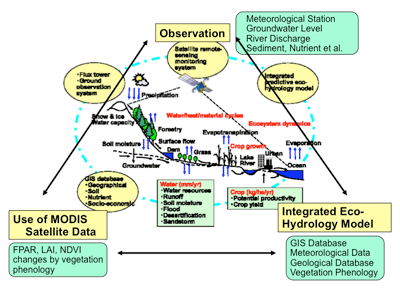
This monograph (Part II) is the successor to the 11th publication (Part I), which appeared in 2006. The catchments described here are representative of areas in Japan where human activity has greatly affected the environment. In Japan, regulations promoting nature restoration took effect on January 1, 2005. They include various measures to promote symbiotic relationships between humans and ecosystems. The development of the NIES Integrated Catchment-based Eco-hydrology (NICE) model (Fig.2) and the simulation of ecosystem dynamics in these catchments are very important for the quantitative evaluation of catchments.
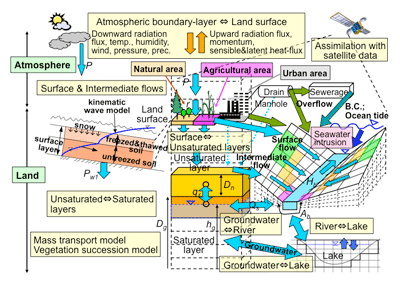
In this monograph (Part II), the author reviews examples of the model application to the catchments where new Nature Restoration and Urban Area Regeneration Projects have been started. For example, the author introduces results from the contribution of groundwater seepage to eutrophication in Lake Kasumigaura (Fig.3), prediction of groundwater level changes in the Kanto Plain (Fig.4), and reproduction of alder invasion in the Kushiro Mire (Fig.5).
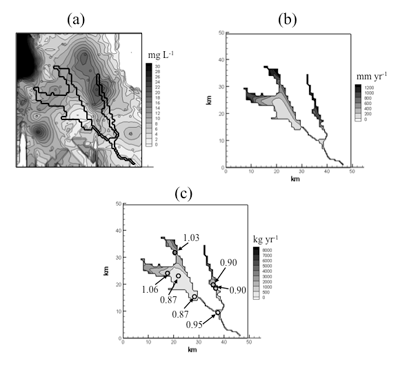
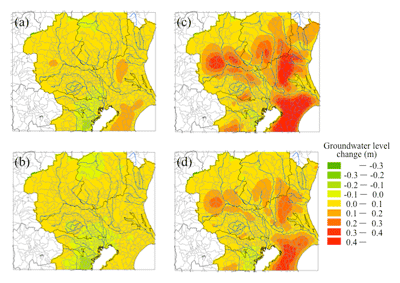
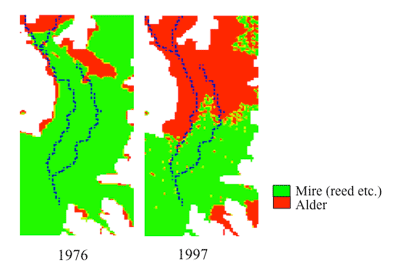
NICE is being further developed to evaluate water-heat-mass dynamics in relation to human activity in East Asia. The author plans to report this research in another monograph (Part III) in the near future.


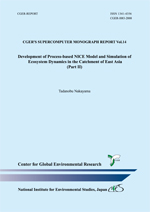 PDF, 6.1 MB
PDF, 6.1 MB